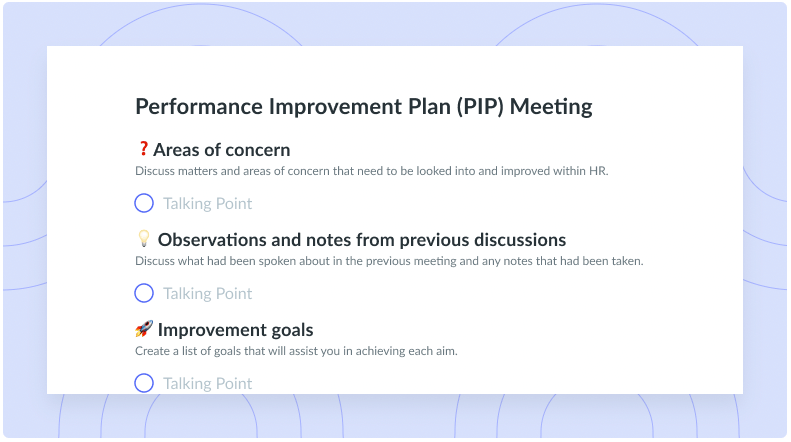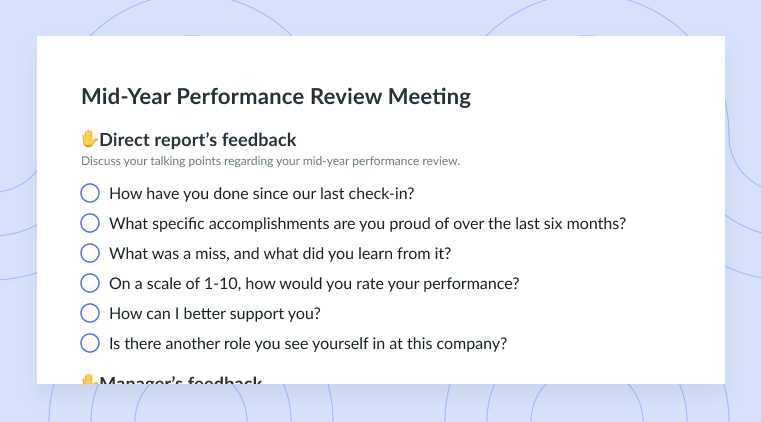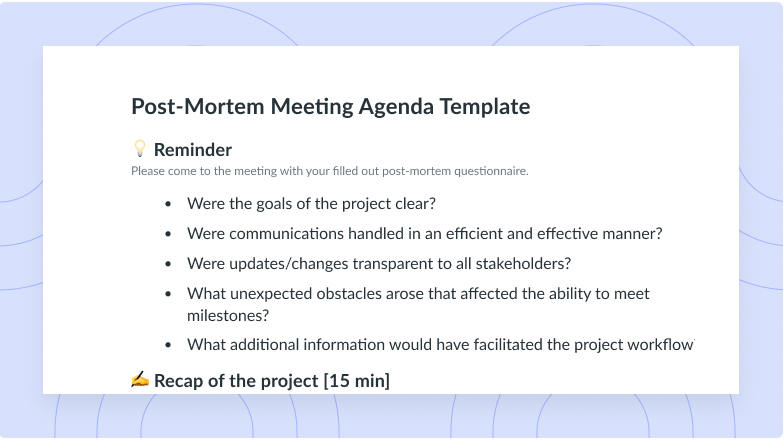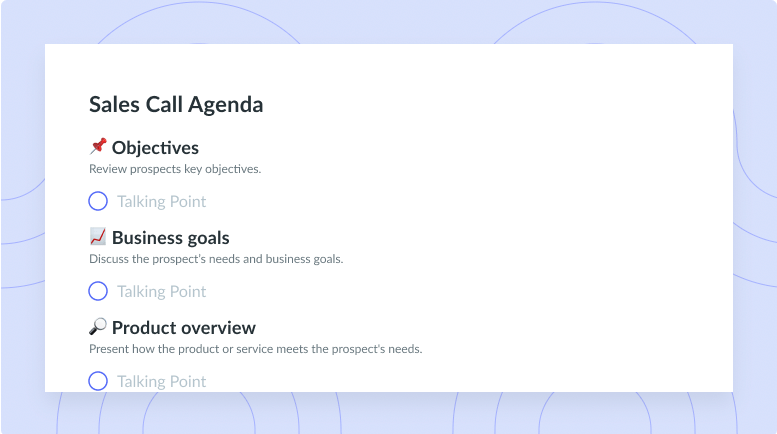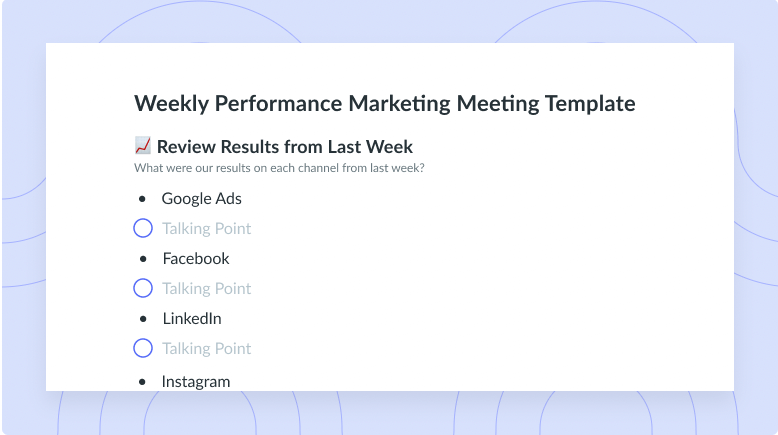All About Operational Performance: Objectives and Tips
Learn about operational performance, its benefits, objectives, and tips for improvement in this informative blog post.
Companies are under greater pressure to do more with less. With lower budgets or fewer people available, managers are working hard to find new ways to improve processes, reap bigger results, and somehow still reach stretch targets. Luckily, you’ve likely got a strong foundation for a team and a skill set that can help you get to where you need to go—it just needs a bit of optimization and some efficiency improvements!
- What is operational performance?
- Benefits of operational performance
- Operational performance objectives
- How to improve operational performance
What is operational performance?
Operational performance is a way of measuring how well your team is doing in terms of efficiency and productivity. Essentially, how well is your team producing the results required of each individual’s role? Operational performance is used by organizations to determine if a team is functioning well and contributing positively to the company. Or, if the team requires training, restructuring, or additional support to begin adding significant value to the company’s overarching goals.
Benefits of operational performance
Measuring operational performance creates benefits within your team, as well as the wider company. Some of these benefits include:
- Decreased costs. As efficiency increases and mistakes decrease, you begin to only spend on necessary costs that contribute to your growth.
- Increased revenue. Having a product that is well aligned with your customer’s wants and needs helps you sell more.
- Faster product growth. When you have a well-defined process and less time is spent fixing errors, you can devote more time to building the product.
- Improved customer happiness. Understanding your customer’s needs and responding quickly to them helps build loyalty around your offerings.
- Higher team morale. Getting into a rhythm is a consequence of high operational efficiency, and makes it easy for your team members to work together towards the same goals.
- Better intra- and inter-team communication. Defined communication flows and approval processes limit bottlenecks and miscommunication issues.
- Likelihood of meeting deadlines is increased. A benefit of having better communication and more efficient project management initiatives is that you’ll meet more of your deadlines on time!

Run efficient meetings, come to a decision, and get back to work
Level up your meeting habits to boost engagement and productivity with a collaborative meeting agenda. Try a tool like Fellow!

Operational performance objectives
There are a ton of different metrics that managers can use to determine if their team is operating at peak performance, and these metrics are usually specific to the team or department’s function. Andrew Neely, author of the book Business Performance Measurement: Unifying Theory and Integrating Practice, suggests there are five major metrics to consider for any department: speed, quality, cost, flexibility, and dependability.
1Speed
How fast is your team completing work? Speed looks at the amount of time it takes for a task to start and finish. You can opt to break tasks down by research, planning, execution, or implementation phases. Or, you can measure how long the whole process takes from start to end.
Examples of questions you can ask to measure speed:
- How long does it take to close a customer support ticket?
- How frequently are you releasing code to production?
- What is the average time between deal stages in the sales life cycle?
- How long does it take to build a new home from the ground up?
2Quality
How good is the final result produced by the team? The quality metric looks at the number of errors, the likelihood of failure, and the impact of failures as part of its measurement (see more about measuring quality with the FMEA model).
Examples of questions you can ask to measure quality:
- How many failed deployments did you have this quarter?
- How many security vulnerabilities are found per assessment?
- How many leads are generated through this piece of content per month?
- How long before this component on the product will need to be replaced?
3Cost
Cost is one of the first metrics that comes to mind for any manager who oversees the budget. It’s important to keep costs down, and you can reap cost savings through many operational performance improvements.
Examples of questions you can ask to measure cost:
- What is the return on investment (ROI) of this activity?
- What is the opportunity cost of this decision versus the other options available?
- How much more do we have to spend to see double the speed or quality result?
4Flexibility
Agility is a super important skill, and yet it’s hard to achieve. Being flexible to changing industry and market conditions enables you and your team to be more resilient over time. It means your company won’t lose out on opportunities because you were too slow or too stubborn to react in time.
Examples of questions you can ask to measure flexibility:
- How fast do you respond to a change in market conditions?
- How fast can your team reach a decision?
- How frequently do you need to adjust a customer’s scope of work (SOW)?
5Dependability
Dependability measures the trust and ability of your team to get the job done right, on time, and within budget. It’s essentially a metric that combines the results of quality and speed, to prove that you’re doing high-quality work that will last in the long term.
Examples of questions you can ask to measure dependability:
- How often were you able to respond to a customer inquiry within 24 hours?
- What is the uptime percentage on your software product and/or website?
- What is your net promoter score (NPS)?
How to improve operational performance
- Identify weak spots
- Focus on performance
- Leverage technology
- Have a performance improvement plan (PIP)
- Create a good workplace culture
- Have regular one-on-one meetings
1Identify weak spots
To create a solution, you first need to define the problem. Spending some time observing your team can be helpful, especially if you don’t usually get involved in the day-to-day operations (like attending status update meetings). It’s also a good idea to speak with each of your direct reports in a one-on-one about areas where they see problems or need support, as they’re more likely to be transparent with you in this one-on-one setting.
2Focus on performance
Every employee will have a different way of getting the same end result. Focus less on how they got there and more on the result that they deliver, unless the process of getting there is what is slowing the process down significantly. Setting SMART goals makes it easy to benchmark current performance and understand if improvements are being made.

3Leverage technology
While a lot of tools can give you some metrics, some elements can be difficult to track in software alone. Keep this in mind so you don’t forget to touch base with your team, ask them questions, and get feedback as you go. Tools like Fellow integrate directly into your meeting management and project management apps so you can track employee performance, goals, and action items.
4Have a performance improvement plan (PIP)
A performance improvement plan (PIP) is typically given to an employee who is struggling with their workplace performance. For example, if an employee hasn’t been turning up results or trying hard to learn the new process, consider implementing a PIP that has specific steps to guide them on how to do better in their role. Giving a PIP to an employee can be challenging, so we’ve put together a free template for you to use here!
5Create a good workplace culture
For employees to innovate new ideas to better complete projects means they need to be comfortable taking measured risks. Having an organizational culture that embraces psychological safety encourages employees to step outside of their comfort zone, try something new, and not fear harsh negative consequences if their idea doesn’t pan out as expected. This good workplace culture is also important for building trust within teams, as team members will feel more comfortable sharing new ideas or challenging the status quo if they think it will help the team reach better operational performance.
6Have regular one-on-one meetings
One-on-one meetings have a ton of benefits. These meetings are a dedicated time for a manager and their direct report to connect, talk about challenges or blockers, and discuss solutions. This way, a manager can get quick insights into weak spots facing the team that they might not have otherwise known about. It’s also a great time for managers to assign stretch goals and more challenging tasks to employees who are ready to step up in their careers.
Pro tip: Fellow offers a seamless setup from start to finish to get your 1-on-1 meetings from dull to delightful in less than a minute.
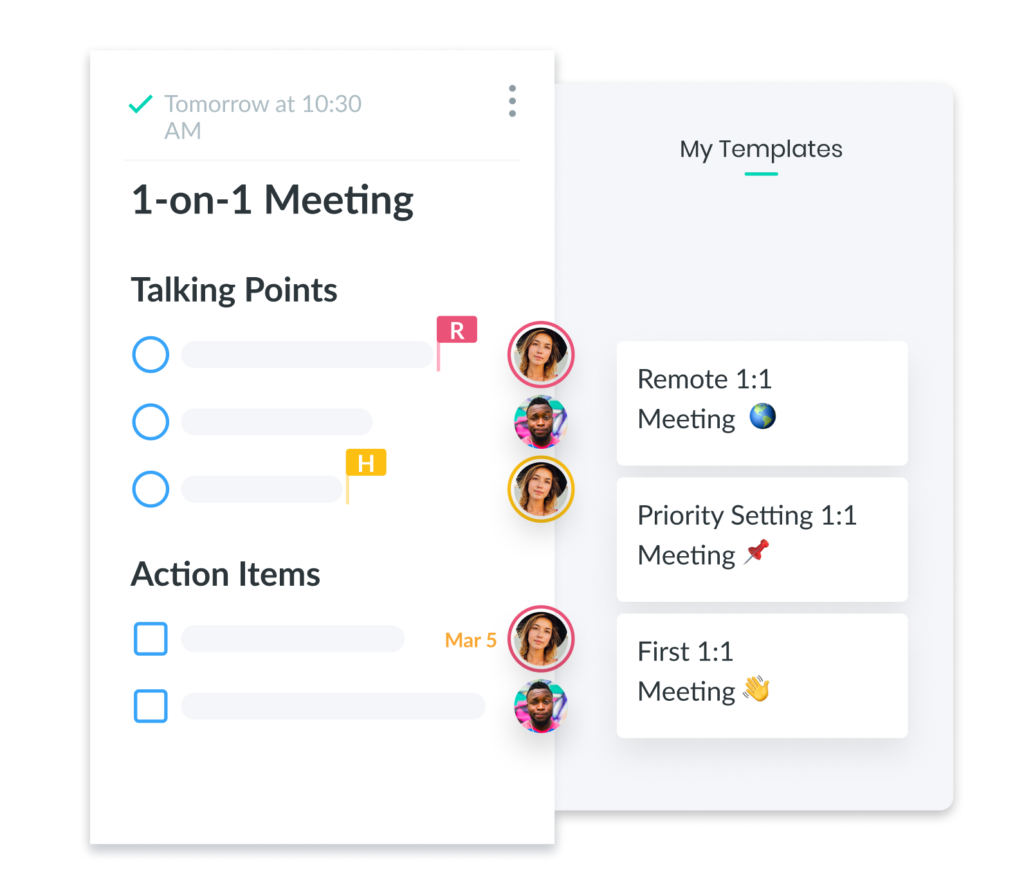
Parting advice
Optimizing your operational performance won’t happen overnight. This process takes time, patience, and a whole lot of communication and transparency with your team. Unsure of what step to take next? Ask your team and peers! You’re not alone in your journey to improve operational performance. It’s a company-wide effort and there are likely team members waiting to share their ideas with you.


![Effective Performance Improvement Plan [+ Free Template]](https://fellow.app/wp-content/uploads/2023/04/Performance-Improvement-Plan3.jpg)







